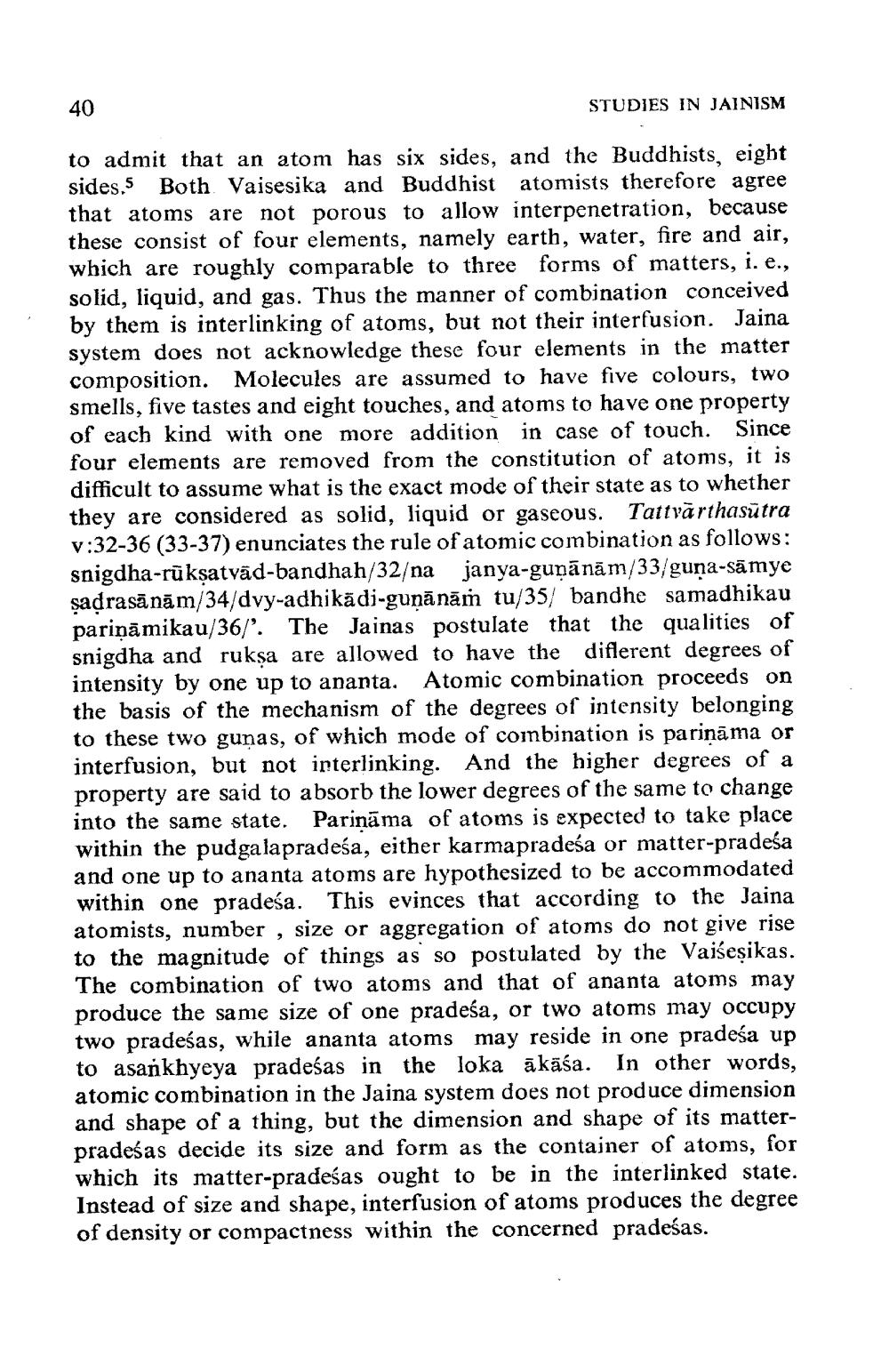________________
40
STUDIES IN JAINISM
to admit that an atom has six sides, and the Buddhists, eight sides. Both Vaisesika and Buddhist atomists therefore agree that atoms are not porous to allow interpenetration, because these consist of four elements, namely earth, water, fire and air, which are roughly comparable to three forms of matters, i. e., solid, liquid, and gas. Thus the manner of combination conceived by them is interlinking of atoms, but not their interfusion. Jaina system does not acknowledge these four elements in the matter composition. Molecules are assumed to have five colours, two smells, five tastes and eight touches, and atoms to have one property of each kind with one more addition in case of touch. four elements are removed from the constitution of atoms, it is difficult to assume what is the exact mode of their state as to whether they are considered as solid, liquid or gaseous. Tattvārthasūtra v:32-36 (33-37) enunciates the rule of atomic combination as follows: snigdha-rūksatvād-bandhah/32/na janya-guņānām/33/guna-sāmye şadrasānām/34/dvy-adhikādi-gunānām tu/35/ bandhe samadhikau parināmikau/36/'. The Jainas postulate that the qualities of snigdha and ruksa are allowed to have the diflerent degrees of intensity by one up to ananta Atomic combination pro the basis of the mechanism of the degrees of intensity belonging to these two gunas, of which mode of combination is parināma or interfusion, but not interlinking. And the higher degrees of a property are said to absorb the lower degrees of the same to change into the same state. Pariņāma of atoms is expected to take place within the pudgalapradeśa, either karmapradeśa or matter-pradeśa and one up to ananta atoms are hypothesized to be accommodated within one pradeśa. This evinces that according to the Jaina atomists, number , size or aggregation of atoms do not give rise to the magnitude of things as so postulated by the Vaiseșikas. The combination of two atoms and that of ananta atoms may produce the same size of one pradeśa, or two atoms may occupy two pradeśas, while ananta atoms may reside in one pradeśa up to asankhyeya pradeśas in the loka ākāśa. In other words, atomic combination in the Jaina system does not produce dimension and shape of a thing, but the dimension and shape of its matterpradeśas decide its size and form as the container of atoms, for which its matter-pradeśas ought to be in the interlinked state. Instead of size and shape, interfusion of atoms produces the degree of density or compactness within the concerned pradeśas.




